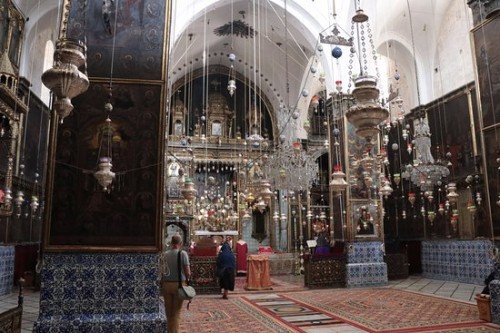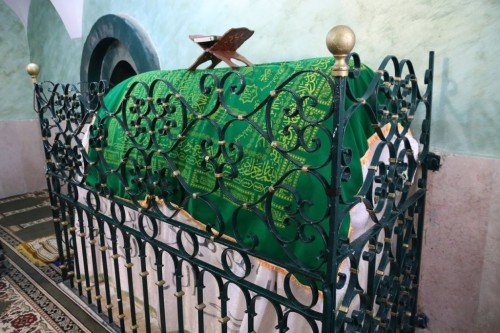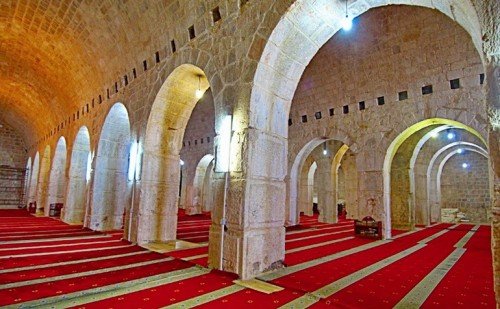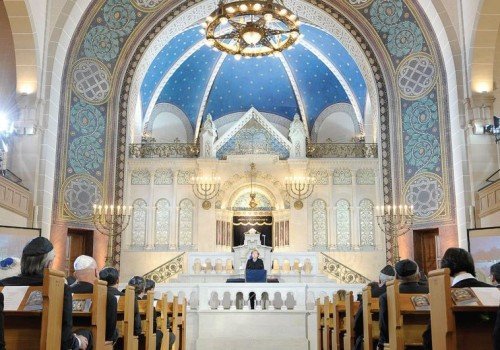The St. Jacob’s Cathedral for the Armenians
St. Jacob’s Cathedral for the Armenians.
Plan for your visit to this church which is one of the most beautiful and most famous churches, and it is the Cathedral of St. Jacob for the Armenians. This church is located in the city of Jerusalem and it is an Armani church from the twelfth century AD.
It is possible to go to the cathedral of St. Jacob for the Armenians through the Armenian Quarter in the Old City of Jerusalem, which is the main church of the Armenian Patriarchate in Jerusalem, and it is known as the Armenian Patriarchate of Saint Jacob.
It will be easy to reach this church because it is located in Armenian Monastery. You can reach this monastery by walking on the temple road that leads the church of Niya and walking westward to the famous monastery.
The history of St. Jacob’s Cathedral.
You will be in a Christian archaeological site, one of the most prominent landmarks of Armenian Quarter and the Armenian Quarter represents the north-western section of the old city of Jerusalem. This church is one of the most famous and oldest churches in Jerusalem.
The history of this church goes back to the fourth century AD and is attributed to Saint Jacob, unlike the current architecture of this church, which dates back to the twelfth century, and this was the era of only the Franks.
You will be wandering around a Christian historical site associated with Saint John, who was one of the disciples of Christ, peace be upon him, and he was the brother of Saint Jacob. It is said that Saint John was killed in this place.
The beautiful architectural planning for Cathedral of Saint Jacob.
This magnificent church was a very large than its current area, but unfortunately this church was destroyed during the Persian invasion of Jerusalem in 614 ADS, and that after the Persians besieged the city of Jerusalem.
This church was rebuilt many times after its destruction by the Persians the construction operations were in the eighth century but when you enter this church you will notice the design of the church at the present time it goes back to the twelfth century that is, since the rule of the Franks.
When you enter this church, you will notice that the walls of this church are covered with wonderful blue tiles that reflect the beautiful lights in the church, as well as these tiles resemble the ceramic tiles in Turkey.
When you look at the walls and tiles covering the church, you will find that this design resembles the dome of the rock, but the decorative elements are different.
You can take a wonderful tour in this wonderful archaeological place and when you wander around you must see the archaeological sections in this church such as the altar and wonderful paintings that you cannot see in any place.
you will be surprised by many beautiful icons as well as some wonderful archaeological monuments in this place and this church derives its historical importance Through its presence in the side of many wonderful antique churches that contain beautiful archaeological landmarks.
What is the internal shape of the church?
When you enter this church, you will find a spacious place, and this church built on the basilica plan. It has three arcades and the middle part of them is the largest one.
When you enter the eastern part of the church, you will find three wonderful alters. These altars are beautiful antique altars that date back to the year 1731.
When you raise your eyes to the top you will see the bright lights and the beautiful decorated ceiling. You can visit some of the famous tombs in this church. This church includes a number of relics for people and you will find a tomb that contains the relics of Saint Jacob.
Go to visit the library inside this church of Saint Jacob, in which you will find a large number of manuscripts and orders dating back to the period of the Mameluk and Ottoman rule.
There is also a museum and schools attached to the church. Saint Jacob was the first bishop in the city of Jerusalem, and his remains were transferred in the Middle Ages to the main altar of the church. You will notice directly in front of the altar two thrones. the first one is very simple in designing but the other one is Very luxurious.
See the most beautiful antiques inside the Cathedral of Saint Jacob. You will see one of the most beautiful archaeological monuments inside this church, which is the holder of icons made of wood and this holder has been restored and contains some wonderful pictures of Christ and Mrs. Mary, as well as it has a wonderful shape and wonderful lustre.
There is also a rock column belonging to the monastery of the great Saint Catherine, and this column arrived in a strange way from Sinai to Jerusalem, and above it there is an icon of the Virgin Mary.
To break it, the icon of the great saint, Georgios, and there are also many icons, the most famous of which is the icon of the Virgin Mary, which dropped wonderful oil before the war on East Jerusalem.
You will see many and many wonderful archaeological things, icons, cemeteries, altars, beautiful walls and wonderful roof covered with archaeological tiles, and these things will not be seen anywhere else, so your visit to this place is an archaeological religion rich in many wonderful beautiful things and therefore you must visit this sacred historical place that contains A large number of oddities and wonders.
After completing your visit to this wonderful archaeological church, you can enjoy wandering around the city of Jerusalem, especially in the old city of Jerusalem. You can also visit the Al-Aqsa Mosque, which has a large number of Islamic monuments and historical sites, as well as you can visit the Al-Qamah Church located near the Cathedral of Saint Jacob, so your tour in this place is a complete tour.
 English
English
 Español
Español
 Chinese
Chinese
 français
français
 português
português
 Italian
Italian
 Russian
Russian
 Czech
Czech
 Deutsch
Deutsch
 Japanese
Japanese









